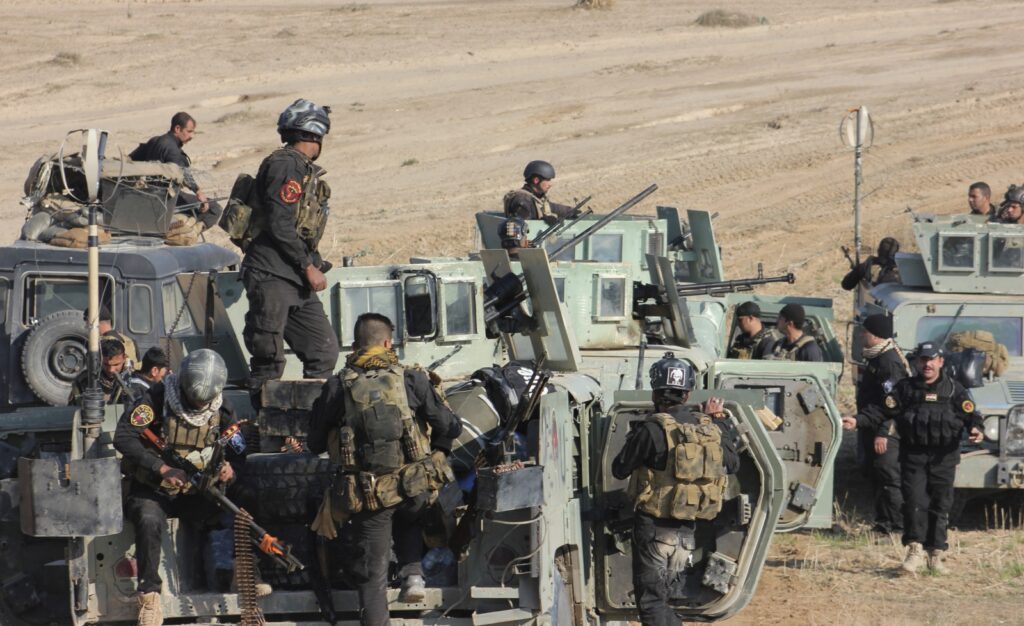On the tenth anniversary of the U.S.-led operation against the Islamic State (ISIS), officials from the United States and NATO convened in Brussels to evaluate the future of their mission, which faces significant obstacles. The backdrop to these discussions includes the recent expulsion of U.S. military forces from Niger’s counter-terrorism base in West Africa, the Taliban’s control over Afghanistan since 2021, and Iraq’s demands for a reduction in U.S. troop presence and coalition operations.
Despite the shifting focus of international attention to Russia’s war in Ukraine and escalating conflicts in the Middle East, U.S. officials warn that the threat posed by ISIS is not diminishing. Defense Secretary Lloyd Austin, who was instrumental in forming the coalition against ISIS a decade ago, emphasized to NATO allies that the terrorist organization continues to pose a global threat that requires sustained international cooperation. “We’re tackling a range of key challenges, including bullying from the People’s Republic of China and Russia’s reckless invasion of Ukraine. But as we do so, we must not lose sight of the threat that ISIS still poses,” Austin stated.
Historically, ISIS was able to establish a vast territorial control over parts of Iraq and Syria, with its leader Abu Bakr al-Baghdadi proclaiming a caliphate from the al-Nuri mosque in Mosul in 2014. Although it has been territorially defeated in Iraq and Syria, the group remains capable of orchestrating high-profile attacks. Notable incidents include a deadly assault on a Russian concert hall in March 2024, which resulted in at least 143 casualties, and two bombings in the Iranian city of Kerman in January that claimed nearly 100 lives. Recently, a 19-year-old Austrian suspect was apprehended for planning a suicide attack on a Taylor Swift concert, swearing allegiance to the ISIS leader.
NATO Secretary-General Mark Rutte noted the evolution of the ISIS threat, highlighting a rise in lone-wolf attacks and the group’s adaptation to new technologies. The Sahel region of Africa is becoming a focal point for ISIS’s activities, with the area now accounting for nearly half of global terrorism-related deaths. Armed groups linked to ISIS and al-Qaeda have caused significant civilian casualties and displacement in countries such as Burkina Faso, Mali, and Niger.
This surge in violence is contributing to increased migration towards Europe, which has become a pressing issue as anti-immigrant far-right parties gain traction and European states tighten their borders. A senior U.S. defense official indicated that there are efforts to diversify ISIS’s leadership and combat capabilities, particularly by expanding operations into Africa and Central Asia.
In light of Niger’s junta ordering the withdrawal of nearly 1,000 U.S. military personnel, the United States is in search of alternative strategies to address the emerging threat in West Africa. Meanwhile, in Iraq, a mutual agreement between Washington and Baghdad aims to conclude the U.S.-led coalition’s military mission by September 2025, as Iraq shifts toward traditional bilateral security partnerships. As plans are solidified for a reduced U.S. footprint in Iraq, it remains unclear what role the U.S. will play in ongoing operations in Syria, where threats persist.
As the meeting in Brussels concludes, the challenges facing the U.S. and its NATO allies in combating ISIS remain daunting, with urgent calls for renewed focus and collaboration to counteract the evolving landscape of global terrorism.



